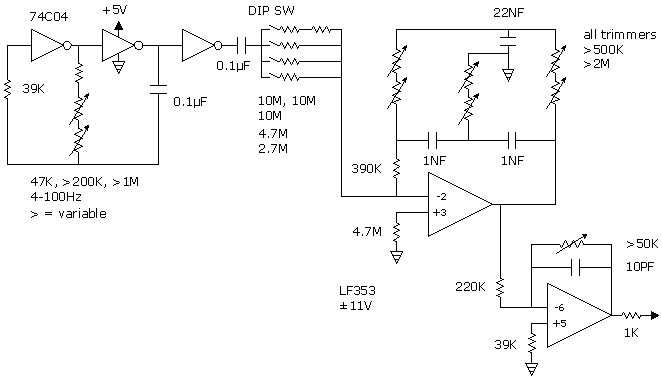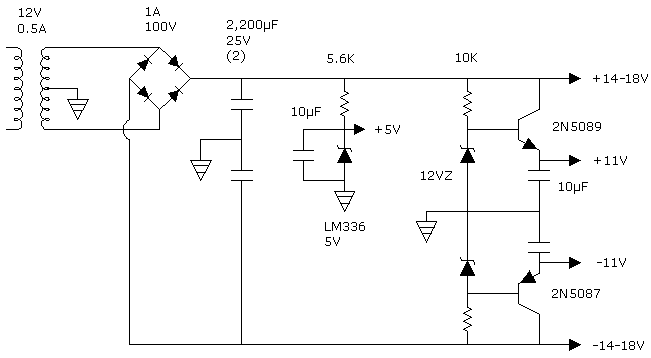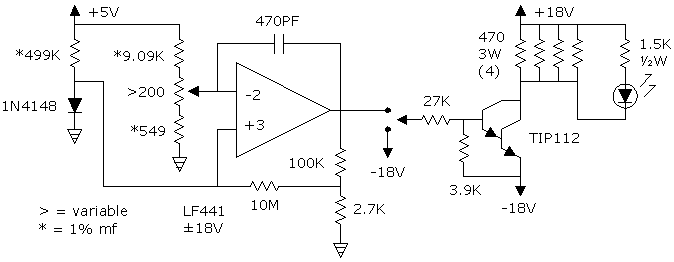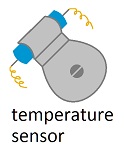| NOV79 |
|
Figure 1. Synthesizer Circuit.
(image page)
|
Figure 2. Power Supply.
(image page)
|
|
Figure 3. The Heater.
(image page)
|
|
Figure 4. The Box.
(image page)
|
|
The box could be made of 0.063 inch thick aluminum for good heat conduction; but it would be hard to bend; and therefore, 0.050 is preferable. The lid can be 0.032 or 0.040. (There are 25.4mm per inch.) The box snaps together without attachments. It then sits in a wooden box for thermal insulation. The line cord goes through where the square notch is. On the other end, the wood is elevated a little for an RCA jack which carries the signal out; and alongside it is the LED. The wood is quarter inch thick (6mm). Various exotic woods can be found at Craftsman Wood Service Company. The dimensions on the wood are the sizes that the pieces are cut, which is sometimes inside dimension, and sometimes outside dimension. Dimensions are in millimeters. I put rubber feet under the aluminum box. There's plenty of space. The printed circuit board is 95x115mm, which leaves enough space for the transformer. The board is elevated above the heating resistors. Aluminum brackets attach it to the sides. Keep the bolts for the brackets low enough for the lid to go on; and put the RCA jack and LED under the PC board.
|



 The diode should be located about 20 to 30mm from one of the heating resistors for good response time. I hold the diode on the bottom of the box by running a thin strip of aluminum or flexible can tin over the top of it with a little curvature and bolting it down. 30 gauge kynar wires are used to reduce heat capacity and stess forces. The diode is coated with heat sink grease.
The diode should be located about 20 to 30mm from one of the heating resistors for good response time. I hold the diode on the bottom of the box by running a thin strip of aluminum or flexible can tin over the top of it with a little curvature and bolting it down. 30 gauge kynar wires are used to reduce heat capacity and stess forces. The diode is coated with heat sink grease.